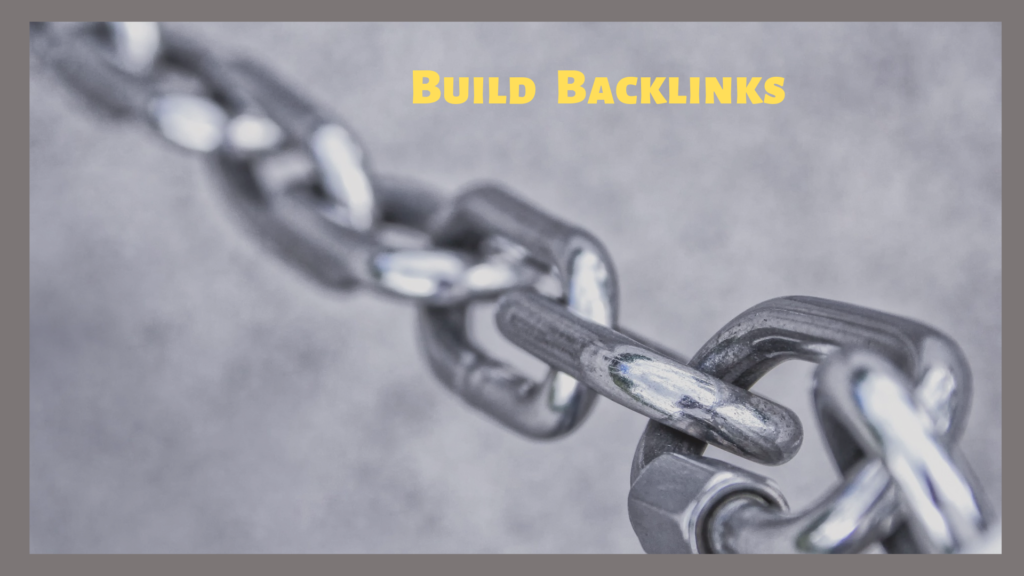Improve Your SEO in 24 Simple Ways
How frustrating is it when you Google search your business, and other websites pop up higher than yours? Can you believe, 75% of people won’t even click on the second page of the search results?
The reason why other websites are ranking higher than you on Google is that they are making a conscious effort to improve their SEO. It’s no secret that Google loves updating its SEO ranking algorithm. In fact, over the course of a year, they can make up to 500 changes. With so many changes to navigate, it’s easy to miss something.
If you’re feeling like you’re falling behind when it comes to search engine rankings, it is never too late to start. Boost your search engine ranking with these everyday hacks that will improve Google SEO ranking. Here are 24 things you can do, with extra resources included, to increase your chances of getting ranked higher on search engines with a focus on Google.
The initial seven improvement factors are Technical/ SEO issues that you can address.
1. Improve Your Page Load Speed.
Google recognizes if your load speed is too slow and it will harm your ranking. There are many ways to increase page load speed, some of which include using a caching plug-in, making sure the code is clean, optimizing image sizes, reducing the number of plug-ins, and minimizing redirects.
Remember that slow websites can also aggravate potential customers, who may bounce from your site if they have to wait even just a few seconds for each page to load. Those negative bounces will hurt your SEO ranking.
2. Optimize Images.
When you’re designing your site, remember that properly optimizing your images can help reduce file size and improve load speed. It can also improve a visitor’s experience without hampering load time.
Besides image file format and sizing, there are other ways to make sure your images are working for you on the SEO front. You can signal relevancy of your content to search engines by using keywords for your image file name, alt tag, title, description, and caption.
3. Make Sure You Have The Basics Of Google Analytics Down.
Google Analytics reports, tools, and data will help you to minimize potential problems, learn what content and marketing tools drive traffic to you, and see how many visitors you’ve converted into leads. If you haven’t set it up yet, not to worry!
Check out this handy beginner’s guide on Google Analytics and Google Search Console, and how to insert your Google Analytics tracking code on your website, and how to implement your Goals setting, which will tell Google Analytics when something important has happened on your site such as a conversion or purchase.
4. Optimize Your Website For Mobile.
As of April 2015, Google has started to penalize sites that are not mobile-optimized, and Google now uses mobile-first indexing. It’s no wonder, with more users consuming content on mobile devices.
If you’re not mobile-optimized, it will affect user experience and conversion. It is particularly important for B2B marketers. Research has shown that 77 percent of executives use their smartphone to research a product or service for their business.
5. Check Your XML Sitemap.
You should have your sitemap registered with Google Search Console to help Google properly analyze your site. However, just syncing your sitemap isn’t enough.
You need to make sure that Google is reading it properly and that you don’t have any errors.
6. Get Rid Of Unnecessary Code.
If your site has excess code, search engines will take longer to crawl your site. On-page JavaScript and CSS are among the main offenders here. You can optimize your crawl budget by crawling your own website, looking for excessive URLs rather than search engines being crawled, and disallow these via robot.txt after testing in Screaming Frog robots.txt tool.
With a more lightweight code, you’ll also help your page load time, and a faster load time means better SEO.
7. Eliminate Broken Links And 301 Redirects.
Who wants to get a 404 page after clicking on a link? Broken links signal a neglected site and this can impact your SEO ranking.
If you either have an older site or a newer one, watch out for 301 Redirects, which could be caused by missing 301s, broken 301s, redirect chains, or 302s. You can use Screaming Frogs List Mode to crawl your list of URLs. This will help you update redirects and fix broken or incorrect redirects.
Make sure to update all internal links to point to the final destination URL.
Thankfully, you don’t have to go through every single page on your website and test the links manually. There are many tools and apps to help ensure that your site is free of broken links, such as:
- Screaming Frog SEO Spider
- Google Webmaster Tool
- W3C Link Checker
- Check My Links
The next 8 hacks are on-page ways to improve your SEO.
8. Doing Your Keyword Research Is Still Important.
To some extent, using keywords that exactly match a person’s search is no longer the most important ranking factor in the eyes of an SEO professional. Rather, it’s the intent behind keywords, and whether or not a piece of content solves for that intent.
By researching keywords that are getting a high volume of searches per month, you can identify and sort your content into topics that you want to write about. By researching keywords for their popularity, search volume, and general intent, you can tackle the questions that most people in your audience want answers to.
Google Analytics can help, and try these other awesome SEO analysis tools:
- Google’s Webmaster Tools
- Ahrefs
- SEMrush
- Found’s SEO Audit Tool
When you do keyword research, look at the top rankers! Targeted keywords should be at the beginning of the page title and in headlines that appeal to users’ emotions. Your keyword density should be kept below 20 percent, that will avert your web site from getting targeted as spam.
9. Write Great Content.
Creating longer, useful, in-depth posts about a topic to position them as the best possible result for the searcher is the best way to improve on-page SEO according to BuzzSumo founder Steve Rayson. In their most recent Content Trends Report, BuzzSumo analyzed 100 million articles published in 2017 and here are some tips they found to improve content:
- Write headlines that appeal to searchers’ emotions
- Use power words in your headlines to trigger a response from searchers.
- Include parentheses or brackets in your titles to draw attention.
- Write a strong meta description.
When you provide useful content, visitors tend to stay longer on your website to consume the information. Based on this research, content between 2,000 – 2,500 words seems to rank the highest in search engine results.
Generally, longer content provides more value, includes more keywords, incorporates more outbound links, and gets people to spend more time on your site.
10. Write Keyword-Strong Header Tags.
When people talk about optimizing your blog title or your headline, the text in the H1 tag is what they mean. The H1 tag is one of the primary indicators of the topic of the post and important to Google.
Always have your title in an H1 tag. If your H1 tag includes keywords that don’t appear in your post, you’re missing out on a chance for ranking for those keywords. Make sure that your H1 and Meta Title tags are different. The meta title tag is specifically there to display a different title from the H1 tag in your title bar and Google search snippet.
Proper use of header tags can help break up your content into sections that are easier to read and utilize. The subtitles in your post, any that are of equal importance one step beneath that of the H1 title tag, should be in H2 tags. Typically, you don’t need to use H3 tags, H4 tags or any other lesser heading in your posts.
11. Create Efficiency And Ease.
If visitors cannot find what they need effectively and efficiently on your website, they’re more likely to navigate away. The shorter time they spend on your website may have a negative impact on the SEO ranking.
Can users learn to navigate your website quickly? Are the calls-to-action that are clickable consistent so visitors know how to interact? When visitors spend too much time trying to figure out how to use your website, they’re spending less time consuming your information. Plus, when they can’t find what they need, they look elsewhere.
12. Write High-Converting Meta Tags.
A meta description is a very short snippet of text placed inside the code of a webpage that describes its content.
Making meta descriptions impactful while keeping your words within the recommended length is always a challenge. Thankfully there’s help for this. If you’re on WordPress and use an SEO plugin like Yoast, adding unique meta descriptions is an SEO ranking factor you can handle. Yoast provides a preview of what it will look like in search engine results and even analyzes it to tell you if your meta description will provide poor, fair or superior SEO.
Your primary focus when writing your meta description should be your end-user. Start your description with the most important and compelling info for the user and go from there, use your keywords and don’t worry about going over character count.
Google does not consider meta descriptions a direct ranking factor, but they definitely indirectly influence rankings. The message should support the title of the article in the search results for stronger click-through rates. Plus, when you use the target keyword of an article in the meta description, and people search for that keyword, it’ll become bold, further influencing a click.
13. Start Blogging.
Blogging is not only great for your business’s lead generation, but it also improves SEO rankings. Think about the last time you found a truly great blog. It drew you in, provided you with exactly the resources you were seeking… didn’t you come back for more?
By producing fresh, relevant content, you drive people to your website and give them a reason to stay on your pages. If you can establish a large group of faithful readers, you can double or triple the traffic to your site on a daily basis.
If you’ve never written a blog, you don’t have to tell us, we know it can be tough to get started. Check out our blog for multiple articles on getting started and optimizing your strategy.
14. Improve Readability Scores On Your Pages.
If your content is spot on, but too difficult and dense to wade through –especially on a mobile device – you’re going to lose visitors. You don’t want a potential customer to give up reading just because it’s too difficult to digest.
Make your content easy to read and understand. Google takes readability into account when ranking webpages.
You can use a variety of tools to test your content’s readability, including:
- Readability-Score.com
- The Readability Test Tool
- Readability statistics in MS Word
15. Use Voice Search.
Voice search is becoming another SEO ranking factor, and Julia McCoy, the founder of Express Writers, says as voice search technology improves and becomes more accessible, that trend is going to continue. “If it makes sense for your brand, use geo-targeted keywords,” says Julia. This means optimizing for local searches. Since most voice searches are local, this tip is an absolute must if you’re a local business.
16. Get Some Press.
When an authority writes about your incredible offering or your niche service, it gives your message credibility. Think about it. Don’t you look to authorities to find your best sources or products? This kind of third-party validation cranks up your SEO ranking more than anything you can write about your own product or service.
If your sites lacked links from authority sites, it can be more difficult to step up in your ranking from Google. If you’ve ever thought about getting some press, a simple way is to pay a PR agency like PR Serve, who has a performance-based pay model, allowing you to pay it only when it gets you press.
17. Tap The Potential of Video.
Video marketing can be a huge traffic source, but some marketers are still ignoring its potential, says Shilpa Shah, co-founder at Hummingbird Web Solutions.
18. Tap The Potential Of Infographics Or Charts.
When you can incorporate other things into your blog posts such as images, video, and infographics, it adds to the usability factor, and Google.
19. Simplify Your Layout And Formatting.
Proper formatting and a user-friendly layout can help improve user experience and make your content easy to scan and digest, so your readers will stay on your site longer and consume your website’s information.
Here are a few tips from our friends about formatting that can help dramatically improve a webpage’s usability by making the content easy to read:
- Use font and font size that’s easy to read.
- Use bold type and colors to call out important information and make it easy to scan.
- Use short paragraphs and line spacing.
- Use bulleted lists for clarity.
- Break up content into sections with subheads. Proper use of header tags with keywords improves SEO rank.
- Use techniques like sliders, structured grids, rollover elements, and drop-down menus to organize content.
20. Improve Your “Contact Us” Page.
Websites that have sufficient contact information are considered to be more trustworthy and therefore may rank higher by search engines. Including a “Contact Us” page on your website navigation not only makes for good user experience but can also potentially earn you some Google hits.
Great contact forms inspire people to reach out and play an active role in a company’s online presence. Check out some tips on how to design a superior contact form.
SEO experts say that an easy, well-designed contact form increases visitors and affects their decision making. It also helps generate new business opportunities, capture new leads, improve customer service, and more.
The last four ranking factors are Off-Page SEO hacks. You’re almost there. See you at the top!
21. Take Social Sharing To The Next Level.
The number of Facebook shares, Tweets, Pinterest pins, and other social media mentions influences SEO rank more and more each year. Installing social sharing buttons on your website not only makes it easy for users to share your content, but it can also help you rank higher on searches.
Social sharing also helps drive purchasing behavior: Nearly 4 in 10 Facebook users report they have gone from liking, sharing or commenting on an item to actually buying it, while 43% of social media users have purchased a product after sharing or liking it on Pinterest, Facebook or Twitter.
Jeff Bullas suggests a few social share button plug-ins to try:
- SumoMe
- Shareaholic
- WP Social Sharing
22. Reduce Your Bounce Rate On High Traffic Pages.
Bounce rate will vary according to industries, geographies, user demographics, and many other factors. So, how do you figure out what’s causing abandonment?
Start by looking at Google Analytics and finding your high-ranking pages that are bringing in search traffic.
Then, identify which of those pages are causing visitors to jump ship. Is your content outdated? Is it easy to read with lots of relevant visuals and white space? Have you optimized it for mobile? How long does the page take to load?
There are lots of ways that you can use Google Analytics to understand what is causing it or you can try these methods recommended by Neil Patel:
- A/B testing to see exactly why people are leaving these high traffic pages.
- Heatmaps like those from Crazy Egg, allow you to see where visitors are clicking on your site.
23. Building Backlinks By Creating Great Content That’s Linkable.
One of the most common and important goals of content is to attract links. Links are still a major part of SEO and if you want to rank, you need to have lots of links pointing back to your website.
Backlinks to a post not only help that specific post rank better in search engines but they also help all other posts on your site. Quality links equals and uptick in organic search engine visitors!
If you want great backlinks in the modern SEO world, you need great content. You can use an outside resource to help you get contextual links to your site, or check out these tips and tricks from quicksprout.com.
24. Guest Post On Reputable Websites.
Going back to #17, “Get some press!” When you write a guest blog for another website, you appear as the authority on the subject matter and you will be able to reach an entirely new audience – potential social media followers who will share your message or even potential customers who will engage with your incredible offering or your niche service!
Again, this kind of third-party validation brings your SEO ranking more than anything you can do all by yourself. Our founder Ron Lieback guest posts monthly on one of the leading digital marketing publications, Search Engine Journal, and also contributes to Forbes, Inc., AllBussiness, etc.
Concluding Thoughts
Improving your SEO ranking might seem complex, but you can make it simpler by using tools and resources that help you take actionable steps to optimize your SEO – plus keep up with the hundreds of Google algorithm changes.
Focus on these quick and simple SEO tips to boost your performance today. Improve your page load speed. Optimize for mobile. Write great content, headers, and metatags. Remove broken links. Simplify layout and formatting. Invest in social sharing. Reduce your bounce rate on your high-traffic pages.
Lastly, when you start to use third-party sources to add credibility, you’ll be on your way to the top of that Google search.







